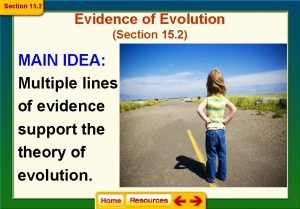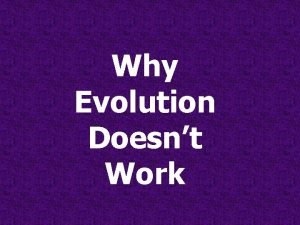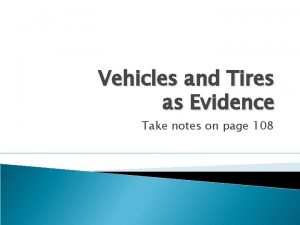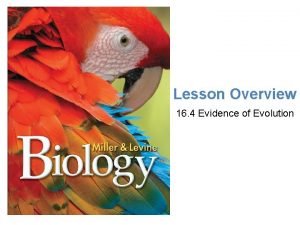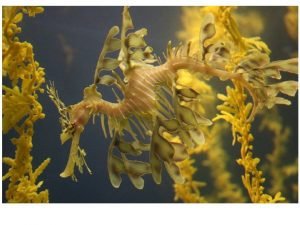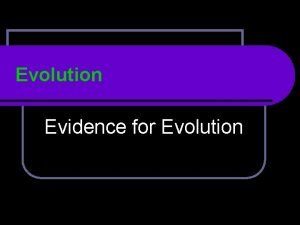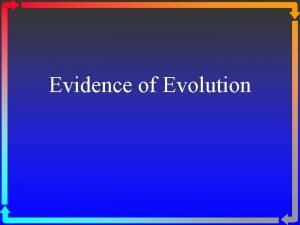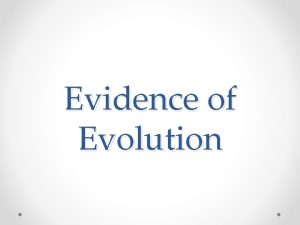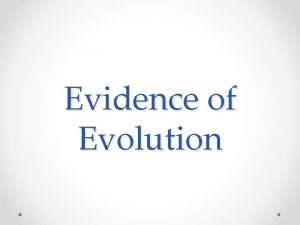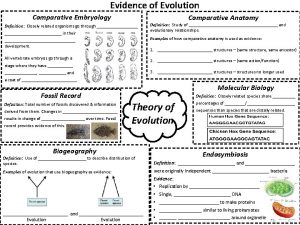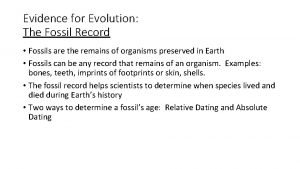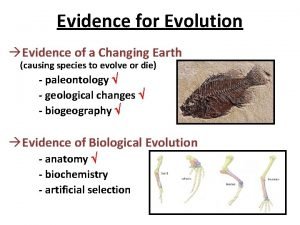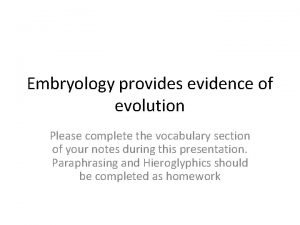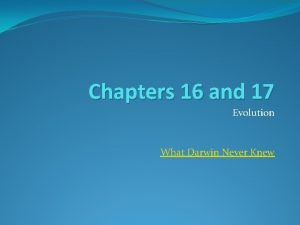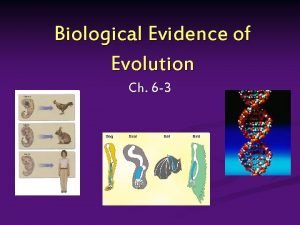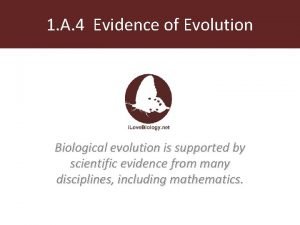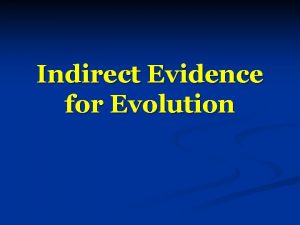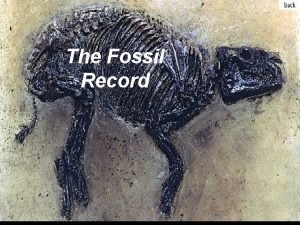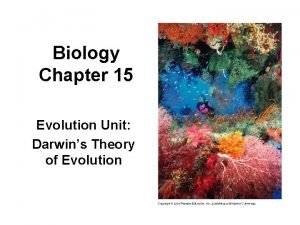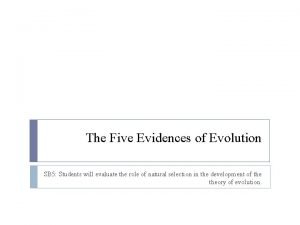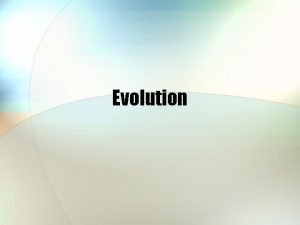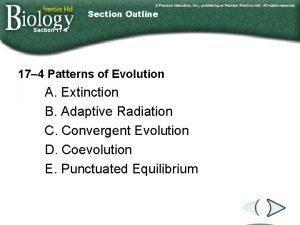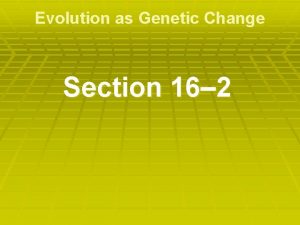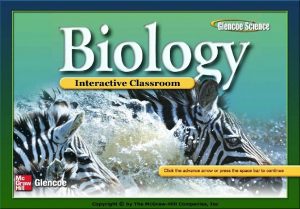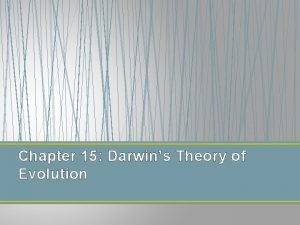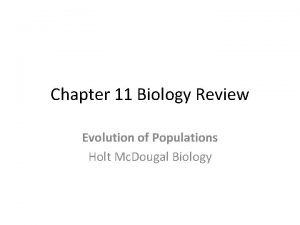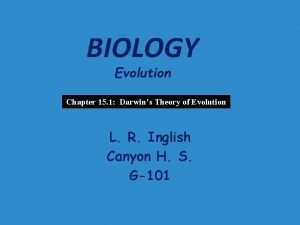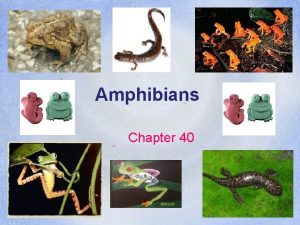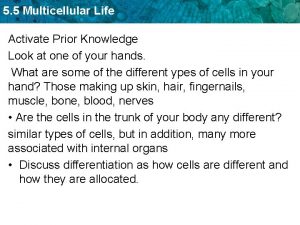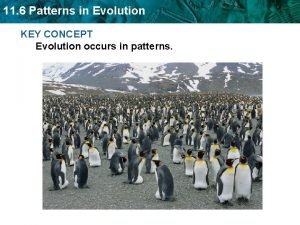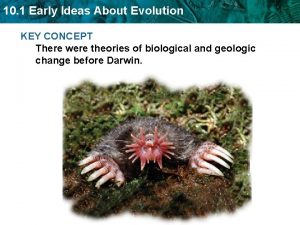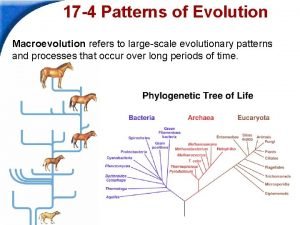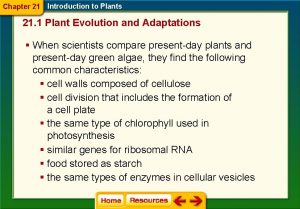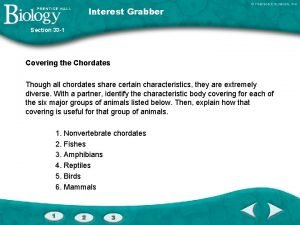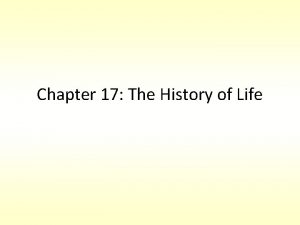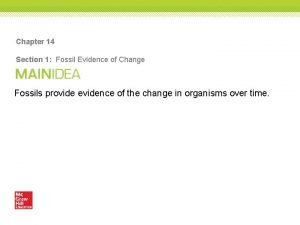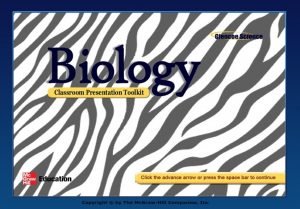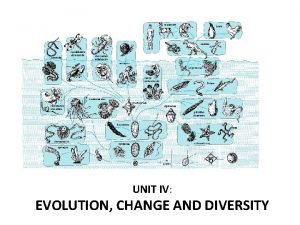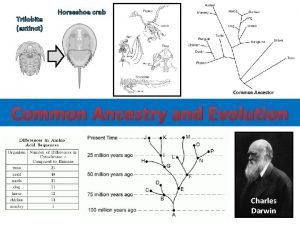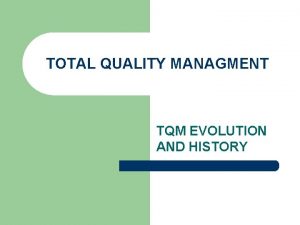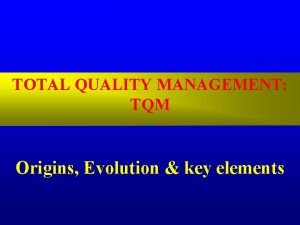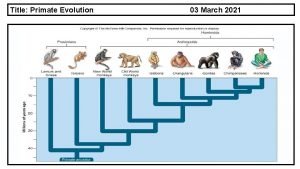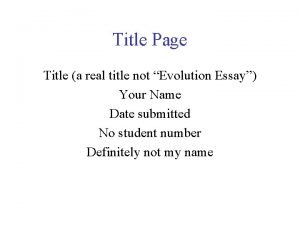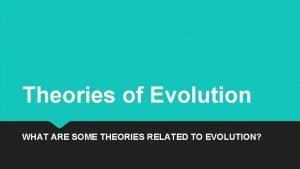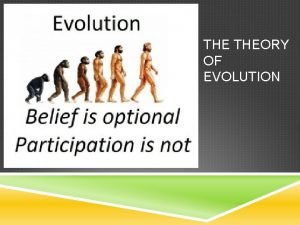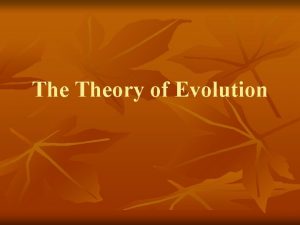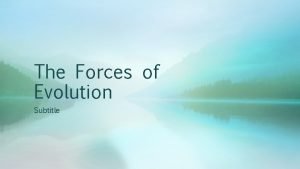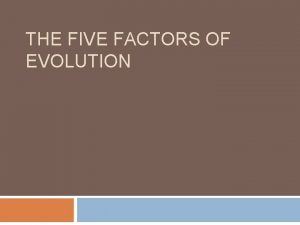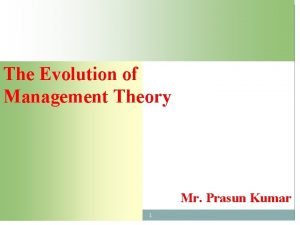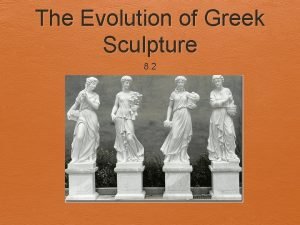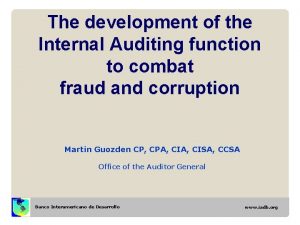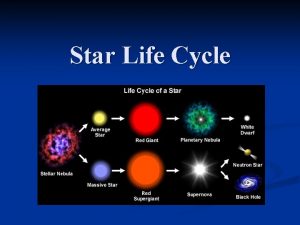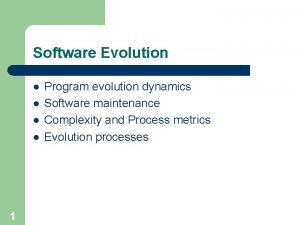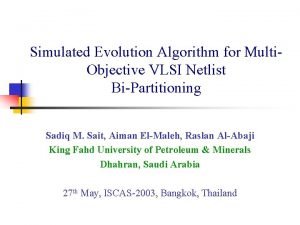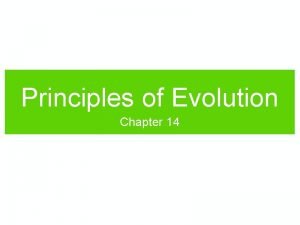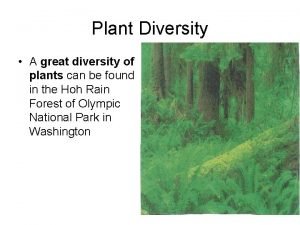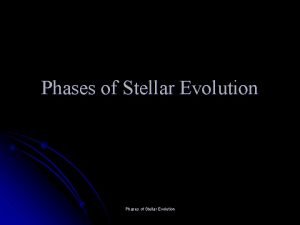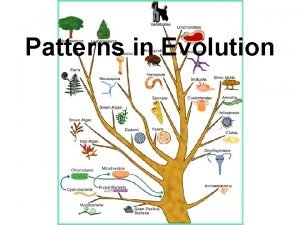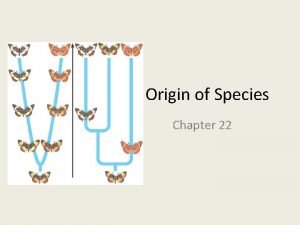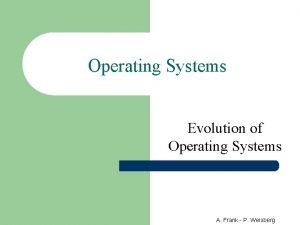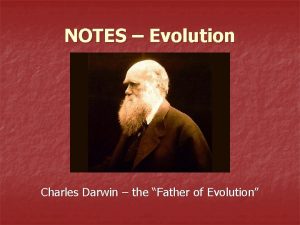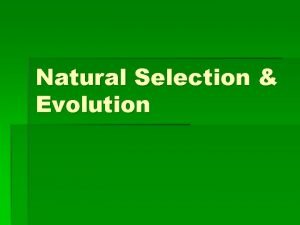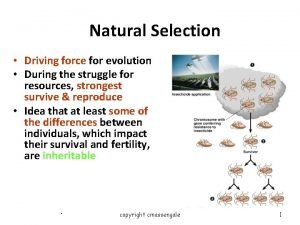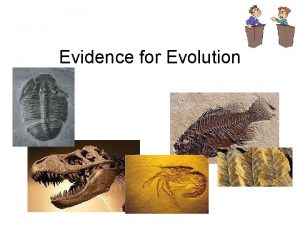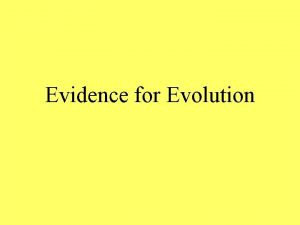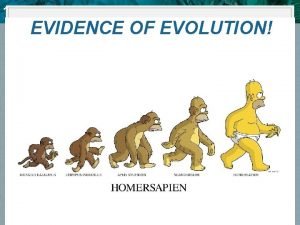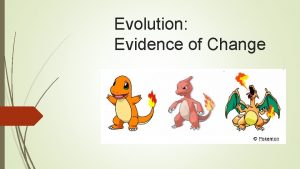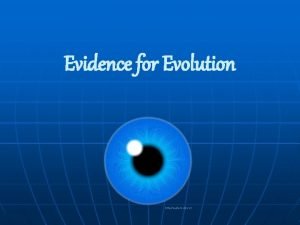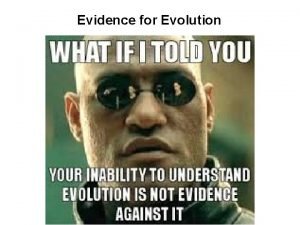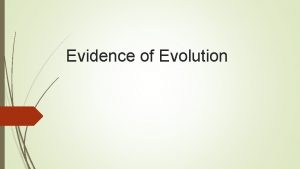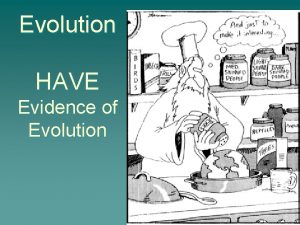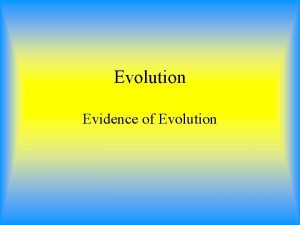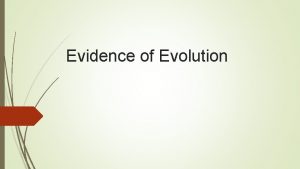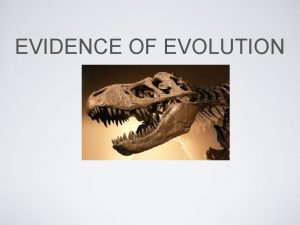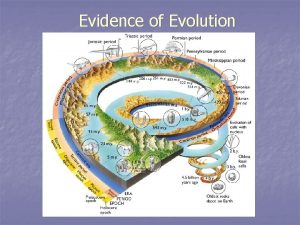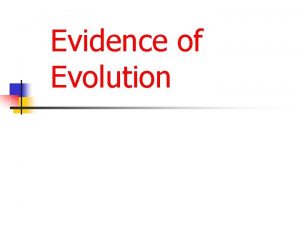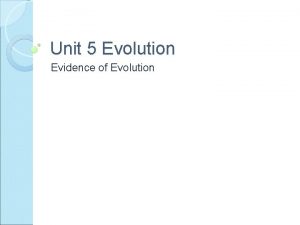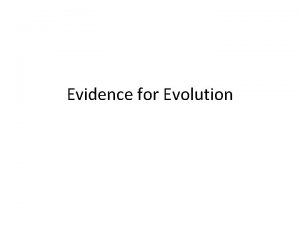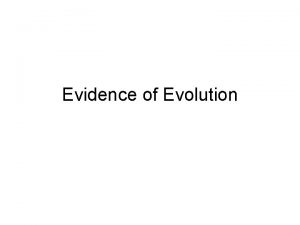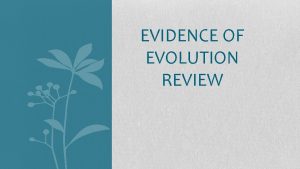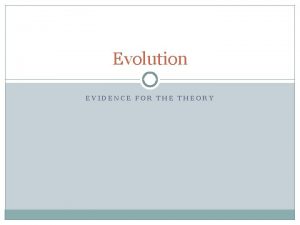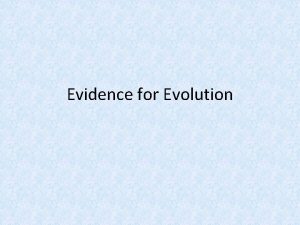Section 15 2 Evidence of Evolution Section 15





















































































- Slides: 85

Section 15. 2 Evidence of Evolution (Section 15. 2) MAIN IDEA: Multiple lines of evidence support theory of evolution.

Evidence of Evolution (Section 15. 2) Click on a lesson name to select.

Evidence of Evolution (Section 15. 2) Objectives: • Describe how fossils provide evidence of evolution. • Discuss morphological evidence of evolution. • Explain how physiology and biochemistry provide evidence of evolution. Click on a lesson name to select.

Review Vocabulary fossil – remains of an organism or its activities Click on a lesson name to select.

New Vocabulary derived trait ancestral trait homologous structure vestigial structure analogous structure Click on a lesson name to select. embryo biogeography fitness mimicry camouflage

Click on a lesson name to select.

Chapter 15 Evolution 15. 2 Evidence of Evolution Support for Evolution § The fossil record § Fossils provide a record of species that lived long ago. § Fossils show that ancient species share similarities with species that now live on Earth. Glyptodont Armadillo

Section 15. 2 § The horseshoe crab has remained virtually unchanged for millions of years.

Chapter 15 Evolution 17. 2 Evidence of Evolution Birds and Dinosaurs § Compare birds and dinosaurs: § Hollow bones § Theropods have leg, wrist, hip, and shoulder structures similar to birds. Oviraptor philoceratops Haliaeetus leucocephalus Archaeopteryx lithographica

Chapter 15 Evolution 15. 2 Evidence of Evolution § Derived traits are newly evolved features, such as feathers, that do not appear in the fossils of common ancestors. § Ancestral traits are more primitive features, such as teeth and tails, that do appear in ancestral forms.

Chapter 15 Evolution 15. 2 Evidence of Evolution Anatomically similar structures inherited from a common ancestor are called homologous structures.

Chapter 15 Evolution 15. 2 Evidence of Evolution Vestigial Structures § Structures that are the reduced forms of functional structures in other organisms. § Evolutionary theory predicts that features of ancestors that no longer have a function for that species will become smaller over time until they are lost.

Chapter 15 Evolution 15. 2 Evidence of Evolution § Analogous structures can be used for the same purpose and can be superficially similar in construction, but are not inherited from a common ancestor.

Chapter 15 Evolution 15. 2 Evidence of Evolution Comparative Embryology § embryo – an organism’s early pre-birth stage of development § Vertebrate embryos exhibit homologous structures during certain phases of development but become totally different structures in the adult forms.

Chapter 15 Evolution 15. 2 Evidence of Evolution Comparative Biochemistry § Common ancestry can be seen in the complex metabolic molecules that many different organisms share. § Information on genetics and biochemistry now provide compelling evidence of evolution that was not available to Darwin (e. g. , DNA, RNA, proteins).

Chapter 15 Evolution Geographic Distribution § The distribution of plants and animals that Darwin saw first suggested evolution to Darwin. § Darwin recognized that South American animals are more similar to each other than they are to the similar species in Europe. He decided that this is due to a common South America ancestor. Rabbit Mara

Chapter 15 Evolution 15. 2 Evidence of Evolution § Biogeography – the study of the distribution of plants and animals on Earth. § Patterns of migration were critical to Darwin when he was developing his theory. § Evolution is intimately linked with climate and geological forces.

Chapter 15 Evolution 15. 2 Evidence of Evolution Types of Adaptation § An adaptation is a trait shaped by natural selection that increases an organism’s reproductive success. § Fitness is a measure of the relative contribution an individual trait makes to the next generation.

Chapter 15 Evolution 15. 2 Evidence of Evolution Camouflage § Camouflage morphologoical adaptations that allow organisms to blend into their surroundings. Leafy sea dragon

Chapter 15 Evolution 15. 2 Evidence of Evolution Mimicry § One species evolves to resemble another species. Western coral snake California kingsnake

Chapter 15 Evolution 15. 2 Evidence of Evolution Consequences of Adaptations § Some features of an organism might be consequences of other evolved characteristics. § They do not increase reproductive success. § Features likely arose as an unavoidable consequence of prior evolutionary change.

Section 15. 2 Summary • Fossils provide strong evidence to support evolution. • Homologous and vestigial structures indicate shared ancestry. • Examples of embryological and biochemical traits provide insight into the evolution of species. • Biogeography can explain why certain species live in certain locations. • Natural selection gives rise to features that increase reproductive success.

Chapter 15 Evolution 15. 3 Shaping Evolutionary Theory Mechanisms of Evolution § Population genetics § Hardy-Weinberg principle states that when allelic frequencies remain constant, a population is in genetic equilibrium.

Chapter 15 Evolution 15. 3 Shaping Evolutionary Theory § This equation allows us to determine the equilibrium frequency of each genotype in the population. § Homozygous dominant (p 2) § Heterozygous (2 pq) § Homozygous recessive (q 2)

Chapter 15 Evolution 15. 3 Shaping Evolutionary Theory

Chapter 15 Evolution

Chapter 15 Evolution 15. 3 Shaping Evolutionary Theory Genetic Drift § A change in the allelic frequencies in a population that is due to chance § In smaller populations, the effects of genetic drift become more pronounced, and the chance of losing an allele becomes greater.

Chapter 15 Evolution 15. 3 Shaping Evolutionary Theory Founder Effect § Occurs when a small sample of a population settles in a location separated from the rest of the population § Alleles that were uncommon in the original population might be common in the new population.

Chapter 15 Evolution 15. 3 Shaping Evolutionary Theory Bottleneck § Occurs when a population declines to a very low number and then rebounds

Chapter 15 Evolution 15. 3 Shaping Evolutionary Theory Gene Flow § Increases genetic variation within a population and reduces differences between populations Nonrandom Mating § Promotes inbreeding and could lead to a change in allelic proportions favoring individuals that are homozygous for particular traits

Chapter 15 Evolution 15. 3 Shaping Evolutionary Theory Natural Selection § Acts to select the individuals that are best adapted for survival and reproduction

Chapter 15 Evolution 15. 3 Shaping Evolutionary Theory § Stabilizing selection operates to eliminate extreme expressions of a trait when the average expression leads to higher fitness.

Chapter 15 Evolution 15. 3 Shaping Evolutionary Theory § Directional selection makes an organism more fit.

Chapter 15 Evolution 15. 3 Shaping Evolutionary Theory § Disruptive selection is a process that splits a population into two groups.

Chapter 15 Evolution 15. 3 Shaping Evolutionary Theory § Sexual selection operates in populations where males and females differ significantly in appearance. § Qualities of sexual attractiveness appear to be the opposite of qualities that might enhance survival. Natural Selection

Chapter 15 Evolution 15. 3 Shaping Evolutionary Theory § Prezygotic isolation prevents reproduction by making fertilization unlikely. § Prevents genotypes from entering a population’s gene pool through geographic, ecological, behavioral, or other differences Eastern meadowlark and Western meadowlark

Chapter 15 Evolution 15. 3 Shaping Evolutionary Theory § Postzygotic isolation occurs when fertilization has occurred but a hybrid offspring cannot develop or reproduce. § Prevents offspring survival or reproduction Liger

Chapter 15 Evolution 15. 3 Shaping Evolutionary Theory Allopatric Speciation § A physical barrier divides one population into two or more populations. Abert squirrel Kaibab squirrel

Chapter 15 Evolution 15. 3 Shaping Evolutionary Theory Sympatric Speciation § A species evolves into a new species without a physical barrier. § The ancestor species and the new species live side by side during the speciation process.

Chapter 15 Evolution 15. 3 Shaping Evolutionary Theory Adaptive Radiation § Can occur in a relatively short time when one species gives rise to many different species in response to the creation of new habitat or some other ecological opportunity § Follows large-scale extinction events

Chapter 15 Evolution 15. 3 Shaping Evolutionary Theory Coevolution § The relationship between two species might be so close that the evolution of one species affects the evolution of the other species. § Mutualism § Coevolutionary arms race

Chapter 15 Evolution 15. 3 Shaping Evolutionary Theory Convergent Evolution § Unrelated species evolve similar traits even though they live in different parts of the world.

Chapter 15 Evolution

Chapter 15 Evolution 15. 3 Shaping Evolutionary Theory Rate of Speciation § Evolution proceeds in small, gradual steps according to a theory called gradualism. § Punctuated equilibrium explains rapid spurts of genetic change causing species to diverge quickly.

Chapter 15 Evolution 15. 3 Shaping Evolutionary Theory

Chapter 15 Evolution

Chapter 15 Evolution Chapter Resource Menu Chapter Diagnostic Questions Formative Test Questions Chapter Assessment Questions Standardized Test Practice biologygmh. com Glencoe Biology Transparencies Image Bank Vocabulary Animation Click on a hyperlink to view the corresponding lesson.

Chapter 15 Evolution Chapter Diagnostic Questions Which is not a principle of Darwin’s theory about the origin of species? A. Individuals show variations. B. Variations can be inherited. C. Organisms have more offspring than available resources will support. D. Offspring always inherit the best traits.

Chapter 15 Evolution Chapter Diagnostic Questions Identify the term that is used to describe anatomically similar structures inherited from a common ancestor. A. ancestral traits B. analogous structures C. homologous structures D. vestigial structures

Chapter 15 Evolution Chapter Diagnostic Questions Which is not a vestigial structure? A. snake pelvis B. Kiwi wings C. porpoise flipper D. human appendix

Chapter 15 Evolution 15. 1 Formative Questions Which was Charles Darwin’s only qualification for his position as naturalist on the Beagle? A. a degree in theology B. an interest in science C. a knowledge of biology D. an understanding of geology

Chapter 15 Evolution 15. 1 Formative Questions What was Darwin’s term for selective breeding? A. evolution B. speciation C. artificial selection D. natural selection

Chapter 15 Evolution 15. 1 Formative Questions What did Darwin infer from his observations of artificial selection? A. Animal breeders could create new species. B. A similar process could work in nature. C. Reproductive success could be increased. D. Variation in a species could be produced.

Chapter 15 Evolution 15. 1 Formative Questions What is the relationship between the terms natural selection and evolution? A. They mean the same thing. B. Evolution works against natural C. selection. Evolution explains how natural works. selection D. Natural selection explains how works. evolution

Chapter 15 Evolution 15. 2 Formative Questions True or False The Archaeopteryx seems to have evolved from reptiles and is a direct ancestor of modern birds.

Chapter 15 Evolution 15. 2 Formative Questions Which is an example of a derived trait? A. a tail B. bones C. feathers D. teeth

Chapter 15 Evolution 15. 2 Formative Questions Which features are similar in use and evolve in similar environments, but do not evolve from a common ancestor? A. analogous structures B. embryological structures C. homologous structures D. vestigial structures

Chapter 15 Evolution 15. 2 Formative Questions True or False Organisms with similar anatomy share similar DNA sequences.

Chapter 15 Evolution 15. 2 Formative Questions At the heart of theory of evolution by natural selection lies the concept of _____. A. adaptation B. biogeography C. gradualism D. speciation

Chapter 15 Evolution 15. 3 Formative Questions The development of the evolutionary theory has led to the understanding that the raw material for evolution is _____. A. genes B. traits C. adaptation D. competition

Chapter 15 Evolution 15. 3 Formative Questions Why does the ratio of gray to red owls remain the same after the population has doubled?

Chapter 15 Evolution 15. 3 Formative Questions A. They each have different predators. B. They compete with one another for C. resources. Both are equally adapted to survive in environment. their D. New individuals have emigrated into population. the

Chapter 15 Evolution 15. 3 Formative Questions Which of these conditions can act on phenotypes to provide adaptive advantages to a population? A. mutations B. natural selection C. nonrandom mating D. small population size

Chapter 15 Evolution 15. 3 Formative Questions Which description is evidence that a speciation has taken place?

Chapter 15 Evolution 15. 3 Formative Questions A. A physical barrier has caused two groups from a population to adapt to different environments. B. Some members can no longer produce fertile offspring with members of the original population. C. A small group has developed mating behaviors are different than those of the rest of the population. that D. Some members from a population have developed physical characteristics that are different than the original population.

Chapter 15 Evolution 15. 3 Formative Questions Which evolutionary pattern is represented by the similarities between these two organisms that live on separate continents? A. coevolution B. convergent evolution C. directional evolution D. divergent evolution

Chapter 15 Evolution Chapter Assessment Questions Determine which morphological adaptation the monarch butterfly exhibits. A. camouflage B. mimicry C. embryological adaptation D. vestigial structure

Chapter 15 Evolution Chapter Assessment Questions The divergent evolution of these cichlid fish is an example of what type of speciation? A. coevolution B. mutation C. adaptive radiation D. convergent evolution

Chapter 15 Evolution Chapter Assessment Questions What tempo of evolution does this model represent? A. gradual B. elevated C. sequential D. punctuate d

Chapter 15 Evolution Standardized Test Practice Which explains why the tortoises on the different islands of the Galápagos had slightly different variations in their shells? A. The different tortoises were different species. B. The environment on each island was C. different. Each type of tortoise could survive only on own island. its D. They arrived on the islands from different continents.

Chapter 15 Evolution Standardized Test Practice Which is the best explanation for the similarities in the construction of these forelimbs? A. Each forelimb is a similar modification derived from a different ancestor. B. Natural selection has produced similar modifications in the forelimb.

Chapter 15 Evolution Standardized Test Practice Which is the best explanation for the similarities in the construction of these forelimbs? C. They are functionally similar features that have evolved independently. D. They are modifications of the forelimbs of a common ancestor.

Chapter 15 Evolution Standardized Test Practice Predators learn to avoid monarch butterflies because they contain a poison that is distasteful and can cause the predator to get sick. The viceroy butterfly finds protection by closely resembling the monarch. What is this adaptation in the viceroy called? A. camouflage B. fitness C. mimicry D. resemblance

Chapter 15 Evolution Standardized Test Practice Why are cheetahs so genetically similar that they appear inbred? A. Individuals in the population had randomly. mated B. Their population had declined to a very number. low C. A large sample of the population settled in aseparate location. D. A mutation appeared and became common insubsequent generations.

Chapter 15 Evolution Standardized Test Practice Within a population of squirrels, those that live higher in the mountains where it is cooler have long fur. Squirrels that live in the foothills where it is warmer have short fur. The original population is believed to have had intermediate fur length. Which graph represents this type of natural selection?

Chapter 15 Evolution Standardized Test Practice B. A. C.

Chapter 15 Evolution Standardized Test Practice These cichlid fish are believed to have diverged from a single ancestor. What type of speciation is represented by this divergence? A. adaptive radiation B. allopatric speciation C. convergent evolution D. disruptive

Chapter 15 Evolution Glencoe Biology Transparencies

Chapter 15 Evolution Image Bank

Chapter 15 Evolution Image Bank

Chapter 15 Evolution Vocabulary Section 1 artificial selection natural selection evolution

Chapter 15 Evolution Vocabulary Section 2 derived trait biogeography ancestral trait homologous structure vestigial structure analogous structure embryo fitness mimicry camouflage

Chapter 15 Evolution Vocabulary Section 3 Hardy-Weinberg disruptive principle genetic drift founder effect bottleneck stabilizing selection directional selection sexual selection prezygotic isolating mechanism

Chapter 15 Evolution Vocabulary Section 3 (cont. ) allopatric speciation postzygotic isolation mechanism sympatric speciation adaptive radiation gradualism punctuated equilibrium

Chapter 15 Evolution Animation § Visualizing Natural Selection § Punctuated Equilibrium
 Evidence of evolution
Evidence of evolution Evidence of evolution
Evidence of evolution Evidence for evolution doodle notes
Evidence for evolution doodle notes Embryology
Embryology Bottleneck effect
Bottleneck effect Evidence of evolution
Evidence of evolution 4 types of evidence for evolution
4 types of evidence for evolution Analogous structures
Analogous structures Types of evolution
Types of evolution Anatomy and embryology evidence of evolution
Anatomy and embryology evidence of evolution Evidence of fossil record
Evidence of fossil record Evidence of evolution stations
Evidence of evolution stations Biochemical evidence examples
Biochemical evidence examples Embryology evidence of evolution
Embryology evidence of evolution Example of evolution
Example of evolution Charles darwin
Charles darwin 6 evidences of evolution
6 evidences of evolution What is evolution
What is evolution Evidence for evolution
Evidence for evolution Indirect evidence of evolution
Indirect evidence of evolution Evidence of evolution of remnants and impressions *
Evidence of evolution of remnants and impressions * Molecular biology evidence of evolution
Molecular biology evidence of evolution What are the 5 evidences of evolution
What are the 5 evidences of evolution Evolution berkeley
Evolution berkeley What is primary sources
What is primary sources Primary evidence vs secondary evidence
Primary evidence vs secondary evidence Secondary sources
Secondary sources Primary evidence vs secondary evidence
Primary evidence vs secondary evidence Jobs vancouver
Jobs vancouver Are fibers class evidence ?
Are fibers class evidence ? Class evidence vs individual evidence
Class evidence vs individual evidence Individual evidence can have probative value
Individual evidence can have probative value Class evidence vs individual evidence
Class evidence vs individual evidence Ecologic fallacy
Ecologic fallacy Section 17-4 patterns of evolution pages 435-440 answers
Section 17-4 patterns of evolution pages 435-440 answers Stabilizing selection human birth weight
Stabilizing selection human birth weight Section 17-3 evolution of multicellular life answer key
Section 17-3 evolution of multicellular life answer key 16-2 evolution as genetic change
16-2 evolution as genetic change Chapter 15 darwin's theory of evolution
Chapter 15 darwin's theory of evolution Chapter 21 section 1 plant evolution and adaptations
Chapter 21 section 1 plant evolution and adaptations Evolution of populations section 16-1 genes and variation
Evolution of populations section 16-1 genes and variation 5 fingers of evolution
5 fingers of evolution Chapter 15 darwin's theory of evolution section 15-1
Chapter 15 darwin's theory of evolution section 15-1 Evolution of populations section 11 review
Evolution of populations section 11 review Chapter 15 darwin's theory of evolution section review 15-1
Chapter 15 darwin's theory of evolution section review 15-1 Section 40-1 review origin and evolution of amphibians
Section 40-1 review origin and evolution of amphibians Section 17-3 evolution of multicellular life answer key
Section 17-3 evolution of multicellular life answer key Section 6 patterns in evolution
Section 6 patterns in evolution Section 1 early ideas about evolution
Section 1 early ideas about evolution Connecting the concepts macroevolution
Connecting the concepts macroevolution Anthocerophytes
Anthocerophytes Section 33-1 chordate evolution answer key
Section 33-1 chordate evolution answer key Section 17-4 patterns of evolution
Section 17-4 patterns of evolution Chapter 14 section 1: fossil evidence of change
Chapter 14 section 1: fossil evidence of change The history of life section 1 fossil evidence of change
The history of life section 1 fossil evidence of change Evolution of operating systems
Evolution of operating systems What is a offspring
What is a offspring Trilobite and horseshoe crab
Trilobite and horseshoe crab Evolution of total quality management
Evolution of total quality management Juran 14 points
Juran 14 points Primate evolution tree
Primate evolution tree Evolution title page
Evolution title page Lamarck's theory of evolution
Lamarck's theory of evolution Developmental homologies
Developmental homologies Divergent evolution examples
Divergent evolution examples Four forces of evolution
Four forces of evolution Genetic drift example
Genetic drift example Evolution of management theory
Evolution of management theory Evolution of greek sculpture
Evolution of greek sculpture Evolution of internal audit
Evolution of internal audit Computer architecture: concepts and evolution
Computer architecture: concepts and evolution Stellar evolution diagram
Stellar evolution diagram Program evolution dynamics
Program evolution dynamics Evolution of service oriented architecture
Evolution of service oriented architecture Evolution of vlsi
Evolution of vlsi Evolution of shrm notes
Evolution of shrm notes What is evolution
What is evolution Chapter 16 evolution of populations vocabulary review
Chapter 16 evolution of populations vocabulary review Structure of a fern
Structure of a fern Stellar evolution diagram
Stellar evolution diagram What are the patterns of evolution
What are the patterns of evolution Chapter 22 the origin of species
Chapter 22 the origin of species Evolution of operating systems
Evolution of operating systems Whos the father of evolution
Whos the father of evolution Types of natural selection in evolution
Types of natural selection in evolution Driving force
Driving force
